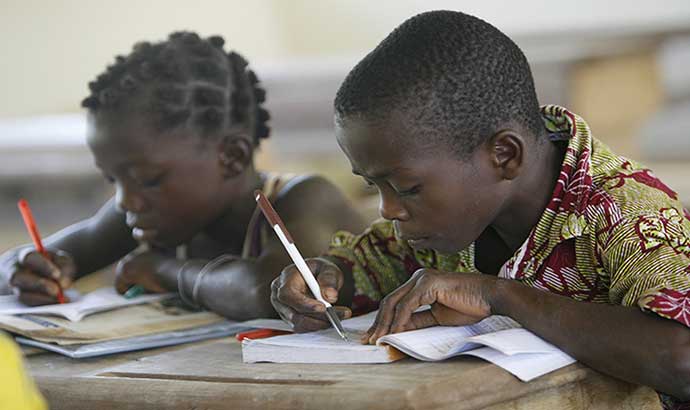ICI executive director Nick Weatherill told ConfectioneryNews that there were great misconceptions about what constituted child labor.
Definitions
"The child helping out on the family farm does not constitute child labor or unacceptable working in any sense, so long as the child isn't undertaking hazardous tasks, he said.
“There's been a lot of profile on this problem for 10 years, but the nitty gritty of what is child labor - what can kids do at what age - is still complex and it needs to be understood better."
National legislation in cocoa growing countries lists the hazardous tasks that are outlawed for children, which includes work with chemicals and machetes.
Weatherill added that if kids worked longer than 14 hours a week or if their farming prevented school attendance it would be considered unlawful child labor.
He said that once companies were on the same page, they could collectively put systems in place to combat the problem.

Paradigm shift.
The International Cocoa Initiative, whose members include Mars, Mondelēz, Hershey and Nestlé, recently announced its 2015-2020 strategy that fundamentally changes its approach to child labor in the cocoa sector. “So not just tackling the symptoms by identifying the children who are working and trying to take them out, but actually preventing child labor from taking place in the first place,” said Weatherill.
This involves a child’s access to education, healthcare and basic nutrition.
“For us that's fundamentally important because we see children as the primary victims of unsustainable farming practices, but also we recognize that they are the farmers of tomorrow, so investing in them as children and not just treating them as child laborers is really key to long-term sustainability.”
Business case: Tracing the supply chain
How are companies accountable to ICI principles?
“What binds them is the fact that ICI is an independent foundation, so it's not just an industry body,” said ICI chief Nick Weatherill. “Like any independent foundations annually we will be reporting against the indicators that are written into the strategy."
"The lead for protection of human rights and children's rights in any context is the state. But because they have the primary responsibility it doesn't mean that no-one else has any responsibility whatsoever.”
ICI’s new strategy encourages its chocolate industry members to trace the cocoa in their supply chains.
"It's in the companies' interest. There's maybe not a battle to be had anymore…As long as there is child labor in the supply chain then it's not a sustainable supply chain. If it's not sustainable then it's not in their business interests,” said Weatherill.
Extent of the problem
Estimates of child labor on cocoa farms in the Ivory Coast and Ghana from organizations like the ICI, Unicef and Tulane University have varied from 300,000 to one million children between 2007 and 2013.
"We'll have more data on this later this year because that Tulane baseline survey that was done back in 2010 is being updated,” said Weatherill.
“You will appreciate that measuring child labor is a very complex task because it happens from one day to the next on millions and millions of smallholder farms,”
He added that farmers might be reluctance to admit that children worked on their farms.
“Our estimate is that between one and two in every 10 kids in West African cocoa are engaged in some form of child labor. That may not be all the time, but at least at one point of the year they've undertaken a hazardous task or done something that has kept them out of school.”
